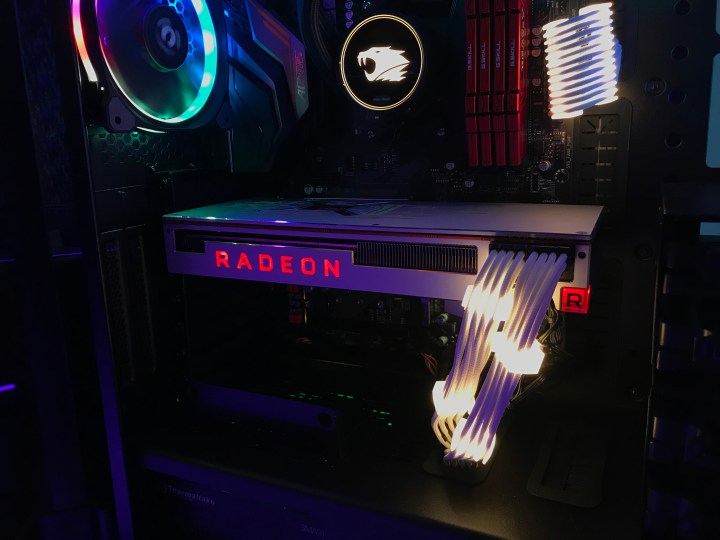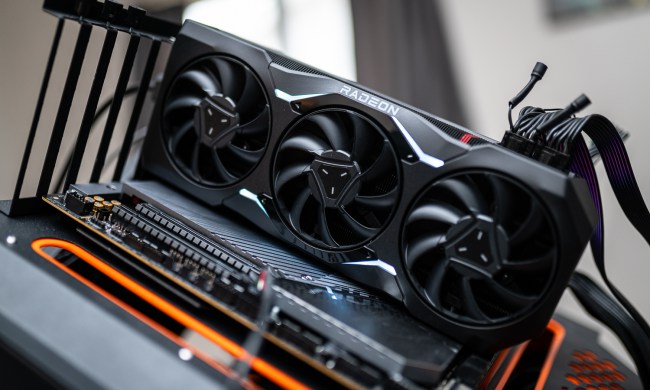
Just days after catching our first glimpse of AMD’s next-generation 7nm Vega graphics card, the Radeon VII, the rumor mill spat out a tidbit about its next-next-generation cards, which reportedly are not far away. Off the back of AMD promising to tell us more about its 7nm Navi graphics cards before the end of 2019, new rumors suggest it will debut the new range of cards at E3 in June and will put them on sale one month later.
Alongside AMD’s big CPU announcements, we expected to see a Navi unveiling or at least a breakdown of what the new architecture might be like. That didn’t happen, but we got an in-depth look at the Vega-based Radeon VII instead — a surprisingly mature GPU solution that’s set to release to the general public on February 7. As capable as that is though, with its alleged RTX-2080-like performance, Navi is expected to be a full-fledged generation of new GPUs with a more midrange focus and is therefore likely to see much broader adoption among gamers.
All we’ve heard from AMD on the subject of Navi in the last year are tantalizing hints of promising performance. Unverified sources have proved far more exciting though, with one claiming that a supposed Navi-based “RX 3080” would be priced at $250 and offer performance comparable to Nvidia’s $500 RTX 2070. While that seems almost too good to be true, if the latest rumor is anything to go by, we may not have long to wait to find out how accurate it really is. An E3 showing for Navi puts the cards at less than six months away from a general unveiling and just over that for a general release.
According to sources cited by RedGamingTech, the Navi cards we’ll see around the mid-point of this year will be “low to midrange,” which would suggest it will compete with the likes of Nvidia’s RTX 2060 and potentially its rumored 1660 Ti (and anything beneath it in the product stack).
It’s long been stated that we won’t see a high-end Navi solution until 2020, though that may clash with AMD’s planned successor generation code-named Arcturus which is rumored to release that same year. Considering AMD has cited Navi as being a very “scalable” architecture, its potential for high-end solutions is intriguing. As Tom’s Hardware suggests, it could mean that it offers great multi-chip or crossfire performance, or that it performs well when in excess of the typical 4,096 stream processors of the Graphics Core Next architecture.




